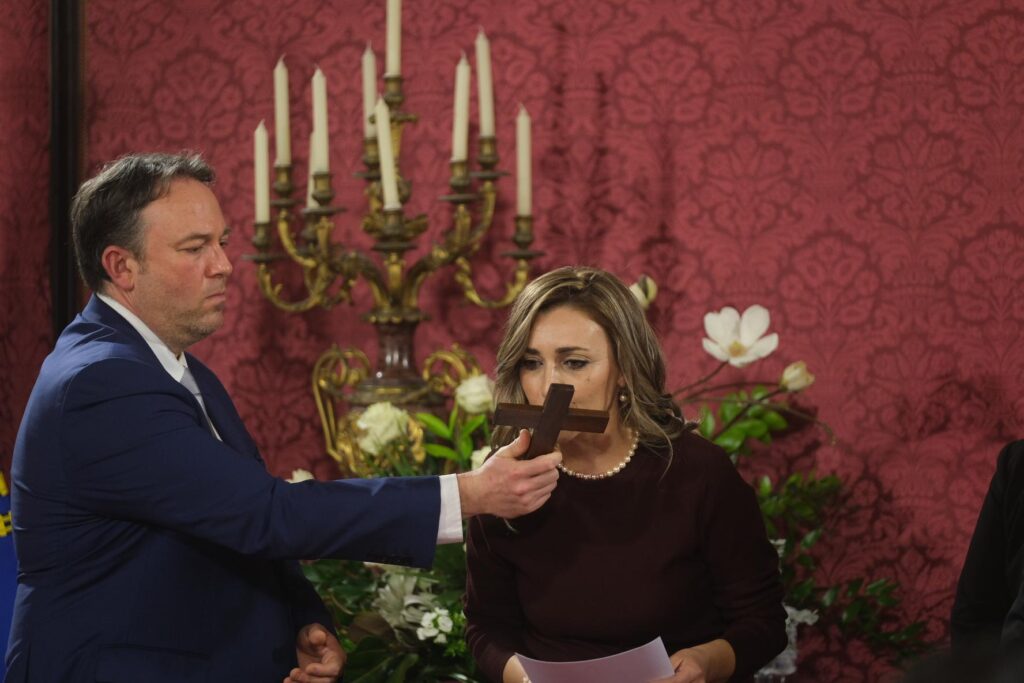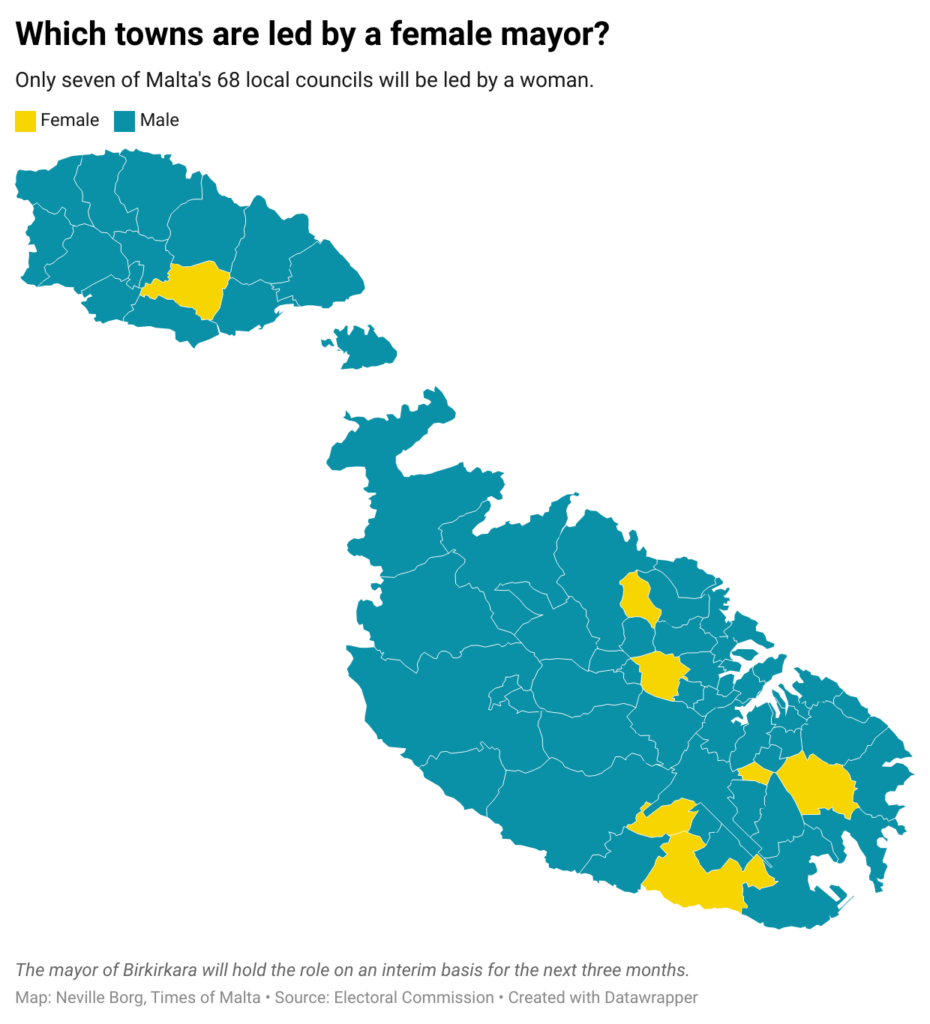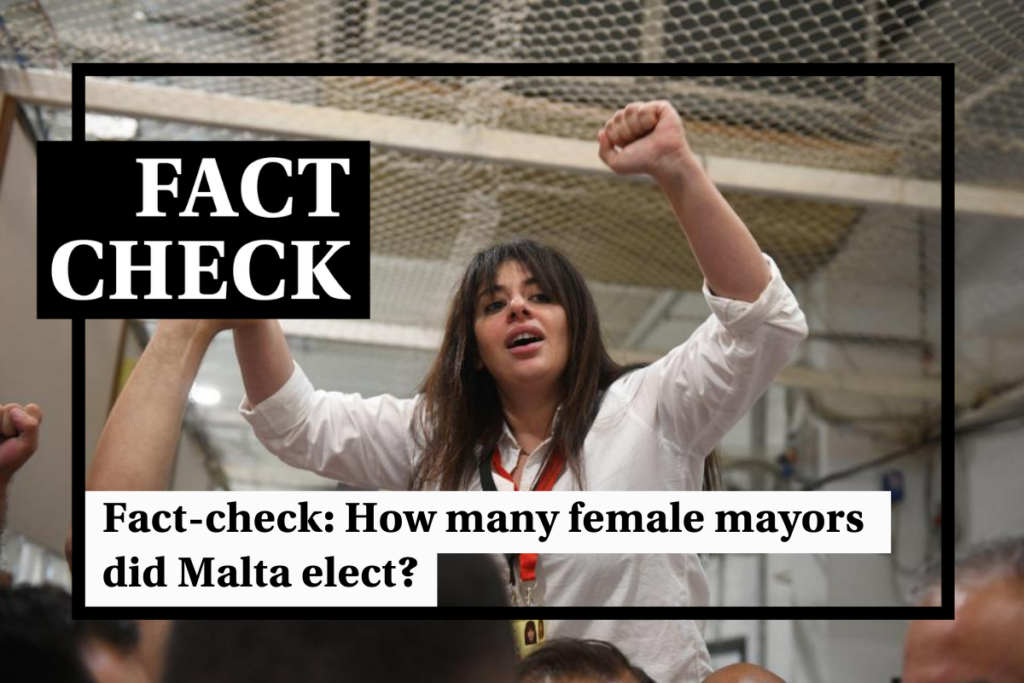With the dust settling on this year’s local council elections, held on 8th June, many raised renewed questions over the impact that gender quotas are having on Maltese politics.
A controversial gender quota mechanism which came into force in the 2022 general elections brought about the election of 12 women to Malta’s parliament. The mechanism hopes to up female representation in parliament, but critics argue that the measure is anti-democratic.
This criticism returned in recent weeks, with many pointing to a stark lack of female representation in Malta’s picks for MEP and, especially, local councils in the elections held in early June. Meanwhile, several contrasting figures for the number of female councillors and mayors have been bandied about, with Malta’s electoral commission failing to publish the exact figures of female mayors across the land.
We dig through Malta’s recent local council results to find the true figure ad how this changed compared to previous years.
Seven female mayors out of 68
Malta now has half as many women mayors as it did in 2019, despite a slight uptick in the number of women in local councils.
Only seven of Malta’s 68 local councils are now led by a female mayor. This includes the town of Birkirkara, where Nationalist Party councillor Desirei Grech was appointed interim mayor after a controversial stalemate in the council over who was to serve as mayor.
Aside from Birkirkara, the towns of Għargħur, Mqabba, Santa Luċija, Xewkija, Żejtun and Żurrieq will also have a woman at the helm.
When the previous local council elections were held in 2019, 11 localities had elected a woman to lead the council,
Part of this is down to women who were in the mayor’s seat five years ago having left local council politics to aim higher.
In the southern town of Bormla, mayor Alison Zerafa Civelli left her post in 2022 to stand for the general election, today serving in Cabinet as a parliamentary secretary.

Davina Sammut Hili, mayor of the town of Floriana in 2019, and Romilda Baldacchino Zarb who led the council in the town of Mosta took a similar path, stepping down from their councils to successfully stand for election in the 2022 general election.
Maria Sara Vella Gafá, elected mayor of the small town of Gudja, in the south of the island in 2019, went one step further, trying her hand at a bid for the European Parliament last month, eventually falling short.
Meanwhile, after a series of disagreements with her party, Anne Marie Muscat Fenech Adami, mayor of Naxxar, one of Malta’s largest localities, announced that she would step away from politics to focus on her family. Just months earlier, she had been nominated by the government to serve as Malta’s non-resident ambassador to Bulgaria.
Six councils previously led by women now led by a man
But while six local councils have seen their stewardship pass from the hands of a woman to a man in this past election, only two councils – the towns of Xewkija and Mqabba – have gone in the opposite direction, with Simona Refalo, daughter of agriculture minister Anton, named Xewkija’s new mayor and Grace Marie Zerafa assuming the mayorship in Mqabba.

Five other councils who were led by a woman in 2019 find themselves in the same situation.
The remaining 56 councils were, and remain, led by men.

More female councillors, Għargħur Malta’s most female council
More broadly, fewer than a third of all councillors elected to serve during this legislature will be women, with 132 women winning a seat during the election, 14 more than in 2019.
Female representation has increased slightly across several localities, with 25 of Malta’s councils now having more women sitting on the council than they did five years ago.
Still, in 21 other towns, the number of women on the council has dipped.
While several towns – Dingli, Għajnsielem, Luqa, Mtarfa, Pietà and San Lawrenz – have elected all-male councils, Malta is yet to have its first all-female local council.
The town of Għargħur comes closest, with four of its five local councillors now being women.
Several of Malta’s larger local councils remain male-dominated, or have become even more so after last month’s elections.
Birkirkara, Sliema and Mosta now have one less female councillor than they did five years ago, as does Żabbar.
But some other towns buck this trend.
Five of St Paul’s Bay 13 councillors are now women, up from three in 2019, while the number of female councillors in Marsascala doubled from 2 to 4, as the council gained two new seats for this year’s election.
Malta lags behind on gender equality in political decision-making
Malta has long struggled with female representation in decision-making positions.
The European Institute for Gender Equality’s 2023 index found that gender inequality in Malta is most pronounced in the “domain of power”, particularly in terms of political decision-making.
The trend has continued this year, with Malta only electing one woman to the European Parliament in last month’s MEP elections, and just a meagre nine woman standing for election in the first place.





